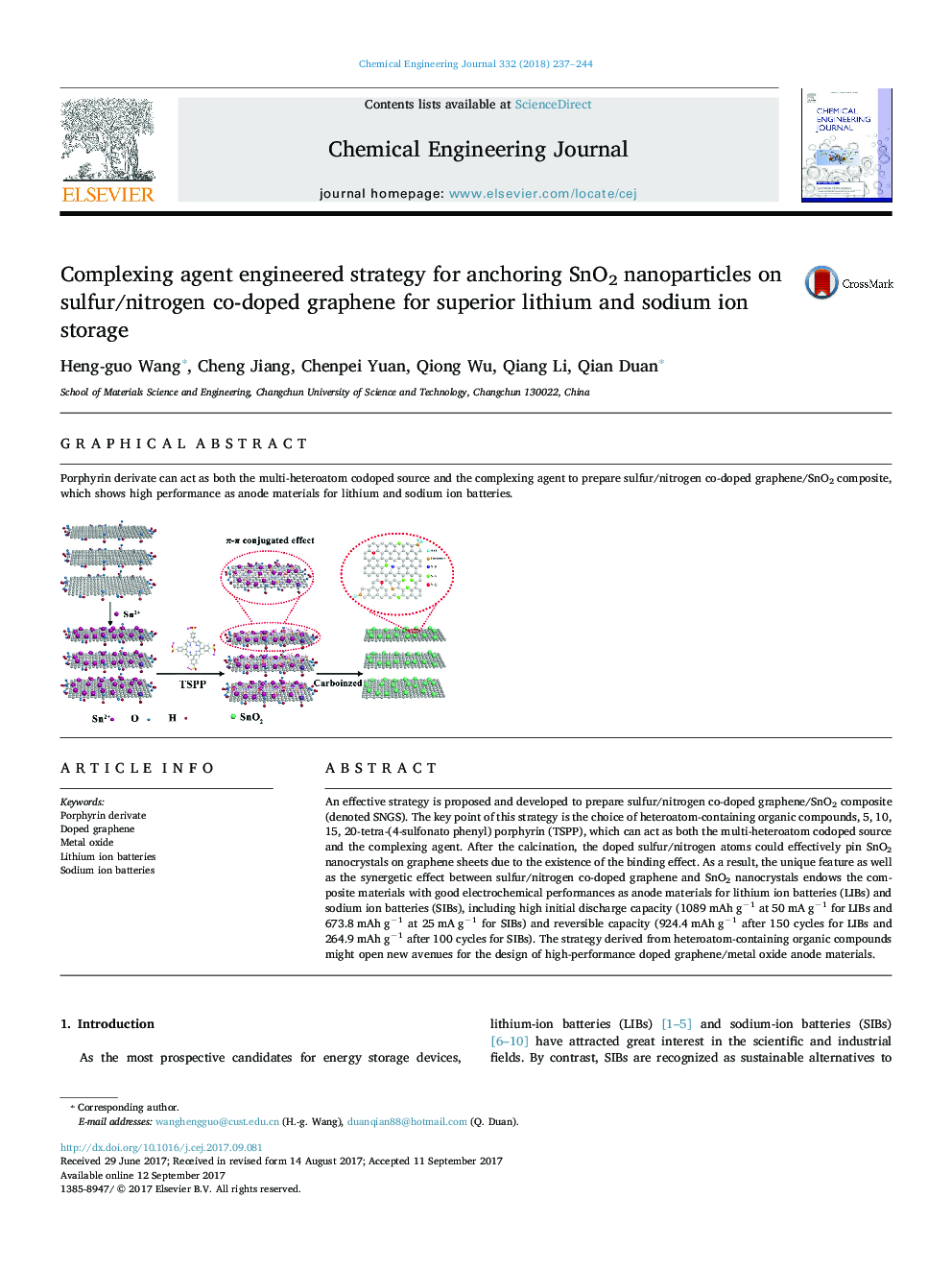| Article ID | Journal | Published Year | Pages | File Type |
|---|---|---|---|---|
| 6464982 | Chemical Engineering Journal | 2018 | 8 Pages |
â¢An effective strategy is proposed to prepare sulfur/nitrogen co-doped graphene/SnO2 composite.â¢Porphyrin derivate can act as both the multi-heteroatom codoped source and the complexing agent.â¢The method is versatile, extensive, available and used extensively.â¢The composite shows high performance as anode materials for lithium and sodium ion batteries.
An effective strategy is proposed and developed to prepare sulfur/nitrogen co-doped graphene/SnO2 composite (denoted SNGS). The key point of this strategy is the choice of heteroatom-containing organic compounds, 5, 10, 15, 20-tetra-(4-sulfonato phenyl) porphyrin (TSPP), which can act as both the multi-heteroatom codoped source and the complexing agent. After the calcination, the doped sulfur/nitrogen atoms could effectively pin SnO2 nanocrystals on graphene sheets due to the existence of the binding effect. As a result, the unique feature as well as the synergetic effect between sulfur/nitrogen co-doped graphene and SnO2 nanocrystals endows the composite materials with good electrochemical performances as anode materials for lithium ion batteries (LIBs) and sodium ion batteries (SIBs), including high initial discharge capacity (1089 mAh gâ1 at 50 mA gâ1 for LIBs and 673.8 mAh gâ1 at 25 mA gâ1 for SIBs) and reversible capacity (924.4 mAh gâ1 after 150 cycles for LIBs and 264.9 mAh gâ1 after 100 cycles for SIBs). The strategy derived from heteroatom-containing organic compounds might open new avenues for the design of high-performance doped graphene/metal oxide anode materials.
Graphical abstractPorphyrin derivate can act as both the multi-heteroatom codoped source and the complexing agent to prepare sulfur/nitrogen co-doped graphene/SnO2 composite, which shows high performance as anode materials for lithium and sodium ion batteries.Download high-res image (122KB)Download full-size image
